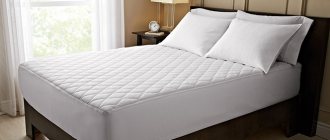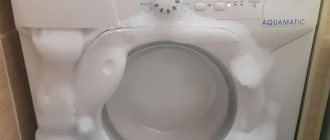The power of a washing machine is a parameter indicating the amount of electricity consumed by the unit. In conditions of total savings and rising prices for utilities, this indicator is not in last place when choosing household appliances. In this article we will tell you how to determine how much power a washing machine has and avoid unnecessary energy costs when using the unit.
The issue of careful energy consumption is relevant for most washing machine users
Power consumed by the washing machine: consumption classes
Appearance and a variety of washing modes are not the most important parameters that guide buyers. Against the backdrop of the current general rise in prices for utilities, the issue of saving electricity during the operation of household appliances is very relevant.
The electrical power consumption of a washing machine is an important parameter that affects energy saving. When choosing and purchasing household appliances, this indicator will determine how energy efficient a particular device will be.
This criterion particularly applies to the choice of washing machine. After all, this is not just a piece of technological development, it is part of your everyday life, requiring almost daily energy consumption.
Your assistant should serve for a long time, bringing only pleasure in use.
How to determine the power of a washing machine?
First you need to understand which parts of a given household appliance consume electricity the most:
- The electric motor is the “heart” of the washing machine. The task of this element is to give rotation to the drum. The main types of motors used in modern devices are commutator, asynchronous and direct drive. Average power consumption ranges between 400 and 800 Watts (0.4 to 0.8 kW). During normal washing, energy consumption is less, during spinning - more.
- Heating element – used to heat water in the tank. It fully automates the washing and drying process. The quality of washing certain items depends on choosing the right temperature. Therefore, the heating element may not turn on at all during washing (rinsing in cool water) or consume power for the entire “coil” - washing at a temperature of 90–95 degrees. Each heating element installed in a washing machine has an installed power. It ranges from 1.7 to 2.9 kW. The higher the power, the faster the water in the tank will heat up.
- Pump (pump) - designed to pump out water at various stages of washing. The power consumption of such pumps varies from 25 to 40 watts.
- The control panel, electronic module, programmer, various sensors, starting capacitors, light bulbs and other radio components are elements that together consume no more than 5 - 10 Watts.
In turn, they will consume the amount of energy corresponding to the choice of washing program.
The programmed modes differ from each other in temperature, washing duration, intensity, number of drum revolutions during washing and spinning, additional options (number of rinses, etc.).
Affects power consumption and weight of loaded items and fabric types.
Power determination
- You can determine how many kilowatts of electricity your machine will consume based on its technical specifications. They are located on the case sticker or in the manual manual.
- A household appliances consultant can explain your questions in detail.
- You can also find out the power by the letter marking of the washing machine of a particular model. It is indicated on the EU energy efficiency label - DIRECTIVE 2009/125/EC, indicating the basic consumer properties of the product.
In this video, you will be told a lot of useful information about energy consumption, including for washing machines. Enjoy your viewing!
Energy consumption classes
The power consumption of washing machines is calculated practically. The calculation was based on a full cycle of washing cotton laundry at a temperature of 60 o C and a loaded weight of 6 kg.
The classes indicate the efficiency index “C” for the use of electricity (kWh per 1 kilogram). The European Community has developed an energy efficiency scale from letter “A” to letter “G”.
“A” and “B” are the most energy-saving classes. “C”, “D” and “E” are average in terms of energy savings. "F" and "G" are the lowest available.
Energy efficiency of standard household washing machines
AC ≤ 0.19 V 0.19 1.29
Can you save money?
There are several recommendations regarding saving on electricity when washing:
- Try to wash all dirty items at once, filling the drum completely. This way you will do fewer washes and reduce energy consumption.
- Reduce spin speed. The difference in spin at minimum and maximum speeds is almost not felt. Moreover, if you select the maximum, the engine will have to work harder and harder, and accordingly more energy will be required. This also applies to water: you don’t have to warm it up to the maximum, because most of the dirt is washed off even in warm water.
- Don't forget about maintaining and cleaning your washing machine. Scale regularly accumulates on the heating element, which needs to be cleaned with citric acid or special solutions. To clean with acid, you need to pour 200 grams of acid into an empty machine instead of detergents and start washing.
Thanks to the information in this article, you learned how much energy a washing machine consumes to operate and how much you need to pay for it.
Energy consumption table for household appliances
For each home, the number of electrical devices, the value of their electricity consumption and the duration of operation will be different. The table below for energy consumption of household appliances contains average information:
| Device name | power, kWt | Operating time per day, h | Consumption per day, kWh | Consumption per month, kWh |
| Fridge | 0,15-0,6 | 24 | 3,6-8,6 | 10,8-25,8 |
| Lighting (10 lamps 20 W each) | 0,020 | 5 | 0,1 | 3 |
| Washing machine | 1-2,2 | 1 | 1-2,2 | 20-30 |
| Vacuum cleaner | 0,65-2,2 | 15 minutes | 0,16-0,55 | 1,6-5,5 |
| TV | 0,1-0,3 | 5 | 0,5-1,5 | 15-30 |
| Microwave | 1,5 | 30 minutes | 0,75 | 10-15 |
| Electric kettle | 0,7-3 | 15 minutes | 0,25-0,75 | 7,5-16,5 |
| Computer | 0,1-0,2 | 5 | 0,5-1 | 7-20 |
| Iron | 1,1 | 15 | 0,3 | 5-8 |
| Dishwasher | 0,5-2,8 | 1 | 0,5-2,8 | 7,5-15 |
| Multicooker | 0,2-2,4 | 1 | 0,2-2,4 | 2-24 |
| Food processor | 0,2-2,0 | 15 minutes | 0,05-0,5 | 0,5-3 |
| Air conditioner | 0,7-1,3 | 7 | 3,5-8 | 15-35 |
| Hairdryer | 1,2-1,5 | 15 minutes | 0,3-0,4 | 5-7 |
| Heater | 1,5 | 5 | 7,5 | 75 |
| Electric stove | 2-8,5 | 3 | 5-10 | 30-150 |
| Coffee maker | 1,5-3,5 | 15 minutes | 0,3-0,8 | 5-10 |
| Hood | 0,1-0,5 | 3 | 0,3-1,5 | 3-4,5 |
How to calculate electricity consumption
Measurements show that the power consumption of the washing machine is:
- During washing it is in the range of 400–800 W.
- When heating water, energy consumption can exceed 2 kW (kilowatts), for some models it can reach 2.9 kW, and in watts it is 2900 W.
As already mentioned, the higher the energy consumption class, the less electricity is consumed. Depending on the class, model, load, mode and temperature, the washing cycle consumes from 300–1600 W/h, in kW this is 0.3–1.6 kWh; the washing machine consumes electricity per wash. At the same time, the maximum consumption for large models with a load of 6-7 kg with drying will be even more than 1.6 kWh.
For example, models with a load of 5 kg consume up to 0.8 kWh per wash - let’s take this value as the average 1 kWh according to a single-tariff meter in Moscow costs 5.38 rubles. This means that for one wash you will pay 4.3 rubles.
Now let's talk about how much the washing machine consumes per day, month and year. For calculations, let’s average that you have 40 washes per month. Based on the above, we will average both the cost of washing and electricity consumption at the level of 0.8 kW and 4.3 rubles.
Let’s say you do laundry on average 3 times a week, and do up to 3 washes per day. Then in a month you wash 12 days and do 36 washes.
Then in a month you will wind up:
Power characteristics of popular models
A modern person is accustomed to comfort and almost always purchases an automatic washing machine, in which you can put dirty clothes, set a program and, at the end of the cycle, receive clean, wrung-out laundry. Therefore, it is worth considering the most popular models of machines, taking into account their power consumption:
- Most models belong to class A+, which ensures energy savings during washing. The power of an LG washing machine rarely exceeds 0.17 kW, which makes it popular among people with average incomes. LG models are available with different load capacities - you can choose one for a small family or choose a unit capable of washing up to 12 kg of laundry at a time.
- Samsung. The unit is considered energy-saving and, depending on the features of the model, has class A and A+. Samsung offers the buyer models with a load of 6 kg.
- Indesit. The energy-saving washing machine has class A. Indesit equipment is equipped with many useful functions and is available with different loading options.
What affects refrigerator consumption?
The energy consumption level of a refrigerator may vary due to various factors. This should be taken into account when choosing a model of household appliances and placing them in the house.
Effect of temperature
Each refrigerator comes with instructions that contain the requirements for its installation. This applies not only to free-standing equipment, but also to built-in ones. Neglecting these recommendations will result in excessive consumption of electricity and rapid wear of the unit.
Ideally, appliances should be placed in a room where the temperature is maintained from +18 to +20 C. It is in such conditions that the level of electricity consumption by refrigerators will be the most economical. At +30 C and above, electricity consumption can double. Unheated rooms are also not suitable for installing units. Negative temperatures can quickly damage a heat pump, causing the compressor to stop turning on.
Heat sources should not be located near household appliances: stoves, ovens, heating radiators. Care should be taken to ensure that the unit is not exposed to sunlight, which can heat its walls.
Compressor power
The compressor is the engine of the refrigerator, ensuring the movement of freon, due to which the chamber is cooled to a predetermined temperature. The efficiency of the compressor determines the power of the unit.
Some models have two compressors: in the refrigerator and in the freezer compartment. When choosing such a device, you should make sure that it has an asynchronous operating principle.
Linear compressors have begun to be installed in modern refrigerators. They ensure constant movement of freon, as a result of which electricity is consumed evenly. Such devices are more expensive than standard options, but they are safer and more economical.
Freezing power of refrigerators
Freezing power is the mass of products that the freezer compartment of the device can freeze to t -18 C per day. In the instructions and on the sticker, this indicator is indicated as an X with asterisks, the number of which indicates the effectiveness of freezing
For example, a family of four should pay attention to a device with a freezing capacity of 10 kg/day
Freezing power is indicated on the device and in the instructions
The amount of electricity a freezer consumes is influenced by a number of factors:
- chamber volume for freezing products;
- compressor power;
- amount of loaded food;
- room temperature.
At the same time, the type of control panel and camera lighting do not affect the efficiency of the equipment.
Energy efficiency classes
According to international standards, refrigeration equipment is divided into classes: A+++, A++, A+, A, B, C, D, E, F, G. Each of them reflects the level of energy consumption of refrigerators.
In addition, there is a COP factor. From it you can find out how many times more the equipment can remove heat than consume electricity. For example, if this indicator is 3, this indicates that the device will spend 1 kW to remove 3 kW of heat.
COP varies depending on the energy efficiency class:
- A+++, A++, A+ – about 3.6;
- A – from 3.4 to 3.6;
- B, C – from 2.8 to 3.4;
- D, E – from 2.6 to 2.8;
- E, F – from 2.2 to 2.6;
- G – less than 2.2.
What components consume energy in washing machines?
How many kilowatts does a washing machine consume when washing? The total value is determined by the level of energy consumption of its main components. These include:
- Electrical engine;
- heating element - heating element;
- drain pump;
- Control block.
The total power of the unit is determined by the sum of the powers of the above parts.
Electric motor
The motor is the main part that rotates the drum and takes on the lion's share of the total energy consumption of the washing machine. Today you can find SMs equipped with one of three types of engines:
- asynchronous;
- collector;
- brushless.
Stator of a brushless electric motor with direct drive
Two-phase asynchronous motors are no longer installed on washing machines. The vast majority of AFMs operate on inverter commutator and brushless electric motors. Commutator motors have a short service life due to brush wear. In addition, they are very noisy.
Today, the best models of equipment from brands such as LG, Bosch, Indesit, Siemens, Miele and others are equipped with brushless electric motors. These products consume 20% less electricity, are much less noisy and can operate for more than 10 years without replacement. The motor power of a washing machine ranges from 400–800 W.
heating element
The main function of the heating device is to heat the water in the tank to the temperature specified by the washing program.
Heating element for Samsung washing machine
The higher the power of this part, the faster it will heat the water, after which the control module will turn off the heating element. Modern heaters have a power of 1.7–3 kW.
Drain pump
This device pumps water out of the tank at different stages of the wash, depending on the selected program. In most cases, the design consists of an impeller rotated by a small electric motor.
Drain pump for washing machine
At the inlet, the impeller blades draw water into the housing, and at the outlet, they push it into the drain hose. Compared to the above parts, the power consumption of the pump is modest - from 20 to 40 W.
Electronic control unit
This important unit includes a central processor, display panel, sensors, a small power supply for low-voltage voltages, starting capacitors and other parts.
Electronic control unit of the washing machine
Despite the large number of installed parts, this device consumes no more than 10-15 W of power.
Washing machine efficiency classes
How much power your washing machine consumes depends on which electrical energy consumption class it belongs to.
All devices are designated by the Latin alphabet from A to G. For example, the letter “A++” means that this is the most economical model in terms of energy consumption.
Typically, this information is stuck on the body of the device; you can also find complete information about a specific household model on the manufacturer’s official website. For example, information about the power of a Samsung washing machine can be found on the Samsung website.
When assigning a washing machine one or another energy consumption class, special laboratory tests are carried out.
The parameter is measured during washing at 60 degrees with a full load of cotton laundry.
Based on the experiment, the unit is assigned the appropriate class:
- “A++” is the minimum electricity consumption of 0.15 kW/h per kg of laundry;
- for class “A+” the electricity consumption is slightly higher than for “A++” - 0.15 - 0.17;
- the average type is “A”, which consumes from 0.17 to 0.19 kilowatts;
- marking “B” – in the range of 0.19–0.23;
- a class “C” device consumes 0.23–0.27;
- a car with the letter “D” under the same conditions consumes electricity from 0.27-0.31.
Washing machines marked: E, F, G are currently no longer produced. They are very energy-intensive, consuming more than 0.31 kilowatts per hour per kg of laundry.
What determines the power of a washing machine?
The expended power of a washing machine consists of the expended energy of its main components:
- The engine turns the drum, the more revolutions, the higher the consumption. In addition, engines come in several types:
- asynchronous with a power of no more than 400 watts, which are no longer in use, but the old unit most likely has just such a motor;
- all new models operate on commutator and inverter motors, which consume up to 800 watts depending on the wash selection.
- The heating element consumes the most energy; it heats the water to the desired temperature. The power of the heating element is 2.9 kW.
- Another energy-consuming part of the washing machine is the pump, which pumps out water several times during washing and rinsing. The device consumes up to 5 watts with mechanical control, and if your washing machine has an electronic display, the consumption doubles.
Is it only the power of appliances that affects electricity consumption? Of course not, this includes program selection, washing modes, drum load, and even the condition of household appliance components.
When purchasing a washing machine, please note:
- equipment with vertical loading of laundry is more economical due to its small dimensions, but it is also suitable for a small family;
- if a spacious drum is important to you, then you should study all the models with a large drum and choose the one with the most economical class;
- when choosing dimensions, focus on the load of laundry that will further satisfy your needs, for example, they are already producing small-sized machines with a depth of 40 cm with a load of 4.5 kg of laundry, washing power consumption is class “A”.
What else does the email depend on? washing machine power?
- The choice of washing mode directly affects the energy consumption. Consumption increases the water heating temperature, wash duration, rinse time, drum speed during spinning, and additional functions.
- Washing polyester will require much less energy than cotton and linen. In addition, these fabrics vary significantly in dry and wet weight.
- The larger the tank load, the higher the electricity consumption.
Choosing “economical” equipment
Probably everyone has encountered a situation where store consultants dumped a lot of information about products, preventing you from concentrating and making a choice. For each machine, they reported what power it had, how many watts it consumed, and what special function it had.
Choosing economical equipment
Despite all the tempting offers of consultants, you need, first of all, to familiarize yourself with the passport of household appliances. It is in this document that the power of electricity consumed is indicated. It is recommended to give preference to energy-saving class A.
Energy saving class A
The second stage will be familiarization with the functions of the unit. You need to clearly decide for yourself: which features of the machine are necessary and which are not needed, and not overpay for unnecessary ones. After determining all the characteristics, you can pay for the selected product.
When studying the characteristics of an automatic machine, you can stumble upon an indicator of its power. Not all buyers pay attention to this value. If you want to purchase a machine that provides high quality washing with minimal electricity consumption, we still recommend analyzing the power of the Indesit washing machine. This will help in choosing a “home assistant”.
What is electricity used for?
The washing machine consumes different amounts of energy. This depends on the selected washing program. Electricity is spent on heating water, operating the drum, cycle intensity, and so on. The total power of the washing machine is determined by the sum of the powers of the main components.
These include:
- Electrical engine;
- Control block;
- heating element – heating element;
- drain pump.
Washing machine energy consumption
Electric motor
The motor consumes the most electricity. Modern washing machines have one of the following types of electric motors:
- brushless;
- collector
Models from LG, Bosch and others are equipped with brushless electric motors. They consume 20% less energy, are quieter, and can last for over 10 years without breakdowns. Commutator motors are very noisy and have a short service life because their brushes wear out. Washing machine power values in kW range from 0.4 to 0.8.
Pump
This mechanism is designed to pump water out of the tank at different stages of washing. It all depends on the chosen program. Basically, a pump is an impeller rotated by a small electric motor. Its blades draw water into the body at the inlet and push it out into the drain hose at the outlet. The power consumption of the pump ranges from 20 to 40 W.
Tubular electric heater (TEH)
This part heats the water in the drum to the temperature of the set washing mode. She may not participate in the work. This depends on the selected program. With high energy consumption, water heats up quickly. The element creates a fully automated drying and washing process. The quality of washing depends on the choice of temperature. When rinsing in cold water, the heating element does not turn on; during washing at a temperature of 95°, the element operates in enhanced mode. Each inserted heating element has its own installed power, which can reach 2.9 kilowatts per hour.
Control block
This assembly includes starting capacitors, a small power supply for producing low-voltage voltages, sensors, an indication panel, a central processor, various light bulbs, a special electronic module and other parts. Although there are many of them, the power supply consumes approximately 10-15 watts.
What does consumption depend on?
A modern automatic washing machine is a complex multifunctional device that heats water, washes clothes, spins them and drains the water. And some models also dry it. So let's figure out what wastes the most light in a washing machine.
The energy consumption of a washing machine is affected by:
- Electric motor. It rotates the drum through a belt or direct drive. Modern devices use commutator or brushless motors (on inverter models). Its power consumption ranges from 400–800 W and depends on the specific model of the machine and the drum load (not significantly).
- The power of the heating element heats the water. Its power is about 2 kW.
- Water drain pump – approximately 40 W.
- Standby control system – 3–10 W.
As you can see, the main energy consumption of a washing machine comes from the drum drive and electric heater (TEH), but they do not work all the time, but periodically. But adding the above power in W and multiplying it by time to get the consumption per hour will not be the correct solution for calculations.
The fact is that during washing the machine consumes different power, it depends on the operating mode and engine speed. In addition, the water is not heated continuously, but over a certain period of time. After heating the water to the specified temperature, the heating element turns off.
How much a machine actually consumes in 1 wash cycle is influenced by 3 main factors:
- Water temperature.
- Number of spin revolutions.
- Loading the drum.
Is it worth pursuing savings?
It’s great if the washing machine’s power consumption is minimal. But besides this, you should understand that an SMA that does not rinse and wash well will be of little use. Therefore, when deciding on a model, a certain balance should be maintained.
Water consumption and watt indicators are interrelated. If the SM collects a little water for washing, it will be easier to heat the liquid, therefore, electricity consumption will be reduced. Also, a tank in which there is little water is easier to rotate, and this also reduces the number of “wound” kW. When choosing an automatic machine, you should decide for yourself whether such savings are needed. Is it worth buying a super-economical machine that cannot rinse clothes well?











